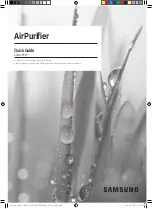
7
Figure 5. Supply Damper
ELECTRICAL CONNECTIONS
WARNING:
ELECTRICAL SHOCK, FIRE OR EXPLOSION
HAZARD
Failure to follow safety warnings exactly could
result in serious injury or property damage.
Improper servicing could result in dangerous
operation, serious injury, death or property
damage.
• Before servicing, disconnect all electrical
power to the indoor blower.
• When servicing controls, label all wires prior
to disconnecting. Reconnect wires correctly.
• Verify proper operation after servicing.
• All electrical connections must be in compliance with
all applicable local codes and ordinances, and with
the current revision of the National Electric Code
(ANSI/NFPA 70).
• For Canadian installations the electrical connections
and grounding shall comply with the current Canadian
Electrical Code (CSA C22.1 and/or local codes).
Pre-Electrical Checklist
√
Verify that the voltage, frequency, and phase of the
supply source match the specifications on the unit
rating plate.
√
Verify that the service provided by the utility is sufficient
to handle the additional load imposed by this equipment.
Refer to the unit wiring label for proper high and low
voltage wiring.
√
Verify factory wiring is in accordance with the unit wiring
diagram (Figures 10 - 12, pages 13 - 15). Inspect for
loose connections.
Line Voltage
• A wiring diagram is located on the inside cover of the
electrical box of the unit. The installer should become
familiar with the wiring diagram before making any
electrical connections to the unit.
•
An electrical disconnect must be located within
sight of and readily accessible to the unit.
This
switch shall be capable of electrically de-energizing
the unit.
• Line voltage to the unit should be supplied from a
dedicated branch circuit containing the correct fuse
or circuit breaker for the unit. Incoming field wiring
and minimum size of electrical conductors and circuit
protection must be in compliance with information listed
on the unit data label. Any other wiring methods must
be acceptable to authority having jurisdiction.
• Provide power supply for the unit in accordance with the
unit wiring diagram, and the unit rating plate. Connect
the line-voltage leads to the terminals on the contactor
inside the control compartment. Extend leads through
Figure 7. Power Entry
Low Voltage
Line Voltage
Elbow
Figure 6. Drain Trap
P-Trap
3. Cut a 9-1/8” x 13-1/8” hole in the duct and bend over
all tabs flat on the inside of the heat duct.
4. Insert the damper into the duct and bend over all tabs
flat on the inside of the heat duct.
5. Seal the opening between the fiberboard and damper
or flexible duct.
Condensate Drainage
A 3/4” condensate fitting extends out of the side of the
unit (Figure 6). The drain trap, shipped in the electrical
compartment, must be installed to prevent water from
collecting inside the unit.
1. Thread the elbow provided with the unit into the drain
connection until hand tight.
2. Connect the condensate tubing onto the fitting, forming
a trap near the drain connection.
3. Route the condensate tube from the trap to a suitable
drain.
NOTE:
For proper drainage,
make sure the trap is
level to the ground and tubing outlet is below trap level.
Содержание P7RD-A Series
Страница 19: ...19...






































